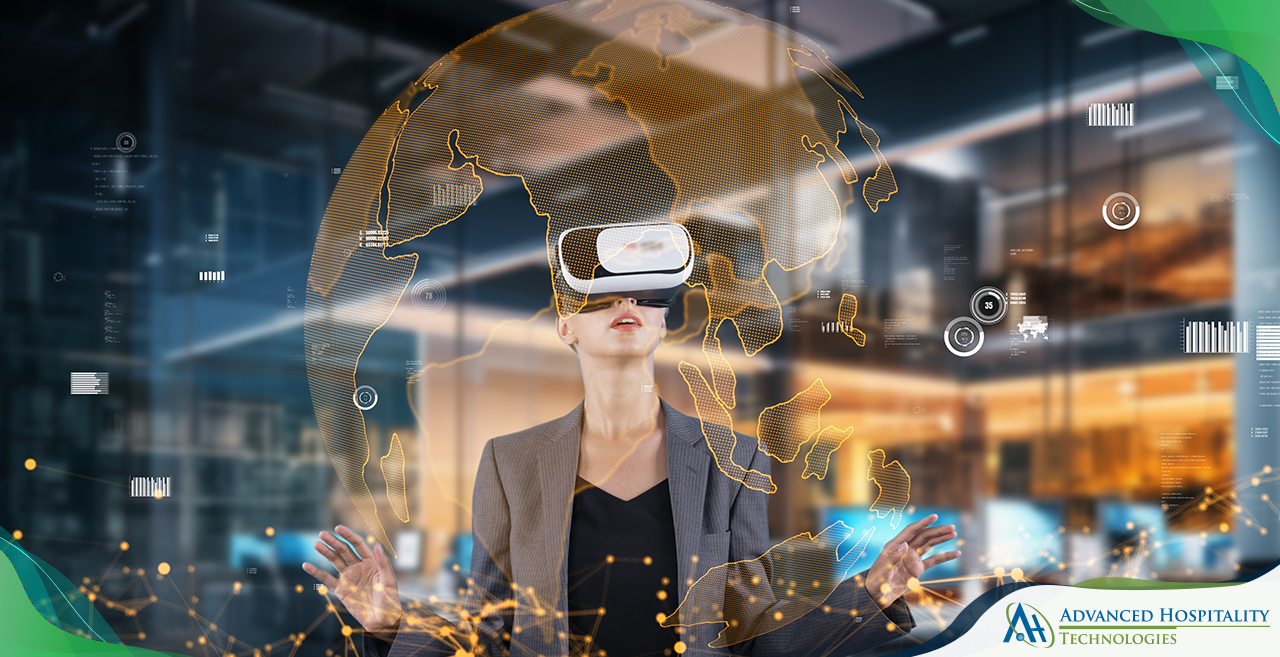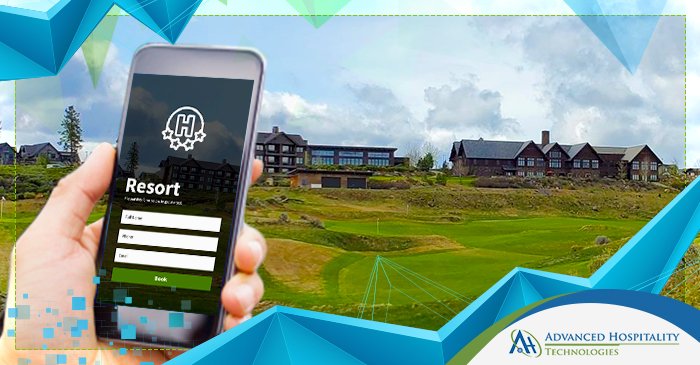Introduction
The hospitality industry is constantly evolving, driven by the need to meet ever-changing guest expectations. With technological advancements, hotels now have the tools to offer more personalized and engaging experiences. Augmented Reality (AR) is at the forefront of these innovations. By integrating AR into various aspects of the guest experience, hotels can create unique, immersive environments that cater to individual preferences. This blog explores how AR is transforming hotel stays and enhancing the overall guest experience.
Virtual Room Previews
One of the most promising applications of Augmented Reality in hotels is the ability to offer virtual room previews. Before booking a room, guests can use their smartphones or AR glasses to explore different room options. By scanning a QR code on the hotel’s website or app, guests can visualize the room layout, decor, and amenities in 3D. This interactive experience allows them to see the exact view from their window, the proximity to hotel amenities, and even the room’s lighting.
This level of transparency is a game-changer for the guest experience. Guests can make more informed decisions, leading to greater satisfaction. It also reduces the likelihood of disappointment upon arrival, as they know exactly what to expect. Moreover, by offering virtual room previews, hotels can upsell premium rooms. When guests can see the benefits of upgrading, such as better views or additional space, they are more likely to choose higher-tier options.
AR-driven room previews can also be a powerful marketing tool. Hotels can showcase their unique features and amenities in a more engaging way, attracting more bookings. As the competition in the hospitality industry intensifies, offering such personalized experiences can be a key differentiator.
Personalized Room Features
Once guests have checked in, Augmented Reality continues to enhance their stay by offering personalized room features. Through an AR app, guests can customize their room settings to suit their preferences. For example, they can adjust the lighting to create a relaxing ambiance, choose artwork that resonates with their taste, or even select a preferred room scent.
This level of personalization significantly enhances the guest experience. By tailoring the room environment to their liking, guests feel more at home and comfortable. It also adds a touch of luxury, as they can enjoy a room that feels uniquely theirs.
In addition to room customization, AR can provide guests with interactive in-room experiences. For instance, guests can scan the in-room menu with their smartphone and see 3D images of the dishes. This not only makes ordering easier but also enhances the dining experience by giving them a visual preview of their meal. Moreover, AR can offer step-by-step instructions for using in-room amenities, such as coffee machines or entertainment systems. This reduces the frustration of trying to figure out how things work, making the stay more enjoyable.
By leveraging AR for personalized room features, hotels can significantly improve guest satisfaction. It creates a sense of exclusivity and attention to detail that guests appreciate, leading to positive reviews and repeat visits.
Interactive In-Room Experiences
Augmented Reality has the potential to turn a standard hotel room into an interactive hub of activity. Hotels can offer a range of AR-based services that enhance the guest experience. One of the most exciting applications is the virtual concierge. Instead of relying on traditional room service or front desk calls, guests can use AR to interact with a virtual concierge. This service can answer questions, provide recommendations, and assist with bookings, all through an interactive AR interface.
This AR-driven interaction is not only more convenient but also more engaging. Guests can access information at their own pace, without feeling rushed. It also adds an element of novelty to their stay, making the experience more memorable.
Another way AR enhances in-room experiences is through entertainment. Hotels can offer AR games or activities that guests can enjoy from the comfort of their room. For example, guests can use their smartphone to scan the room and find hidden AR objects or participate in virtual treasure hunts. These interactive activities are especially appealing to tech-savvy guests, who are always on the lookout for new and exciting experiences.
Furthermore, AR can provide guests with real-time language translation, making it easier for international travelers to navigate their stay. By simply pointing their phone at a sign or menu, guests can instantly translate the text into their preferred language. This feature not only enhances convenience but also makes the stay more inclusive for guests from different backgrounds.
Enhanced On-Site Navigation
Navigating large hotel properties can be a daunting task, especially for first-time guests. Augmented Reality can simplify this process by offering enhanced on-site navigation. Through an AR app, guests can access interactive maps that guide them to their desired location within the hotel. Whether it’s finding their room, locating the restaurant, or heading to the spa, AR provides step-by-step directions with visual cues.
This level of convenience greatly improves the guest experience. Guests no longer need to rely on vague directions or struggle to read traditional maps. Instead, they can simply follow the AR prompts on their smartphone, making their stay more stress-free and enjoyable.
In addition to basic navigation, AR can also highlight points of interest within the hotel. For example, as guests walk through the lobby, they can use AR to learn about the history of the hotel, view information about upcoming events, or discover special offers. This interactive element adds value to their stay by providing them with relevant and interesting information.
Moreover, AR can be used to guide guests through emergency procedures. In the event of a fire or other emergency, guests can use AR to find the nearest exit and follow the safest route. This not only enhances safety but also gives guests peace of mind, knowing that they have easy access to important information.
Personalized Recommendations and Offers
Augmented Reality offers hotels a unique way to deliver personalized recommendations and offers directly to guests during their stay. By using AR, hotels can provide guests with tailored suggestions based on their preferences and past behavior. For instance, when a guest points their device at a hotel restaurant, they could receive a pop-up with personalized dining recommendations. These suggestions could be based on their dietary preferences, past orders, or even current mood.
This level of personalization greatly enhances the guest experience by making them feel valued and understood. It also increases the likelihood of guests taking advantage of these offers, boosting hotel revenue. For example, if a guest receives a personalized offer for a spa treatment, they are more likely to book the service, knowing it has been tailored to their preferences.
Additionally, AR can be used to offer guests personalized discounts or promotions. For example, guests could receive a notification of a special offer when they are near the hotel gift shop or bar. This real-time marketing strategy not only drives sales but also enhances the overall guest experience by providing them with timely and relevant offers.
By leveraging AR for personalized recommendations and offers, hotels can create a more engaging and enjoyable stay for their guests. It adds an element of surprise and delight, making the experience more memorable.
Local Experiences and Attractions
Augmented Reality can extend beyond the hotel to enhance the guest experience with local experiences and attractions. Hotels can partner with local businesses to offer AR-enabled city guides that provide guests with interactive tours of the area. By scanning a city map or landmark, guests can access historical information, fun facts, and virtual tours. This allows them to explore the destination in a more immersive and engaging way.
For example, when guests point their device at a famous landmark, they could see a 3D model of how it looked in the past, along with audio commentary. This not only enriches their experience but also provides them with a deeper understanding of the local culture and history.
Hotels can also use AR to offer exclusive virtual experiences. For instance, guests could enjoy a virtual backstage pass to a local theater production or a guided tour of a nearby museum, all from the comfort of their room. These virtual experiences not only enhance the guest experience but also provide a unique selling point for the hotel.
Moreover, AR can be used to provide guests with personalized recommendations for local dining and activities. By using their smartphone, guests can scan a restaurant menu and see AR reviews, dish recommendations, and even chef interviews. This level of detail enhances the guest experience by helping them make more informed decisions about where to eat and what to do during their stay.
Conclusion
The integration of Augmented Reality into hotel stays is revolutionizing the guest experience. By offering personalized and immersive experiences, hotels can exceed guest expectations and stand out in a competitive market. From virtual room previews to personalized recommendations, AR has the potential to transform every aspect of the guest journey. As technology continues to evolve, its impact on the hospitality industry will only grow. For hotels looking to enhance their guest experience, investing in AR is not just an option; it’s a necessity. By embracing this technology, hotels can create unforgettable experiences that keep guests coming back.




